15 Interesting & Unusual Loon Facts: Wingspan, Behavior & More!
Last Updated on

Loons are fascinating birds, especially for anyone who has had the pleasure of seeing and hearing them. There’s a good reason why people refer to their calling as haunting. It’s something we think should be on everyone’s bucket list. Many mistake loons for ducks. While both live in aquatic habitats, that’s where the similarities end.
Five species of loons call North America home.1 The most widespread is the Common Loon. These birds are unique in many ways, as you’ll soon find out.

Top 15 Loon Facts:
1. Loons Defend Territories Up to 200 Acres
Like many animals, loons use calls and non-vocal communication to mark and defend their territories. It makes evolutionary sense. Sound travels a great distance, especially over water. Letting other birds know a place is occupied helps avoid risky squabbles that could result in injuries or death. These birds cover a lot of land, with ranges from 60–200 acres.

2. Chicks Start Calling When They’re Only 1 Day Old
Loons are born semi-precocial. That means they can get around by themselves to help avoid predators. However, they still need their parents for at least two to three months. The young can start vocalizing just one day after they’ve hatched. They drop the yelps and peeps from their repertoire by 3 months old. You won’t be able to tell the young or adults apart from their calls by 8 months old.
3. An Adult Loon’s Wingspan Is Nearly 5 feet Wide
An adult loon is a sizable bird, weighing in at over 13 pounds. It also has a massive wingspan of nearly 5 feet to get its large body off the ground. These birds need space to do it, too. That’s why you’ll typically find them on large lakes with plenty of room to build up some speed for flight. They are as stealthy in the air as they are in the water.

4. Loons Aren’t Landlubbers
You’ll notice several things about loons if you look at them closely. They have relatively narrow bodies that allow them to swim and fly so well. You’ll also find their feet set further back on their hind ends. That’s good if you’re diving for fish. It’s not so useful for walking on land. The only times they venture out of the water are when mating and on the nest.
5. Pairs Wail When Separated
Loons make several different calls. One of the most compelling is their wail vocalizations. Their young are able to make this sound by the end of their first week. Pairs often use it when they get separated. They have a few variations of this call that sound slightly different. It helps the birds to find each other and reunite.
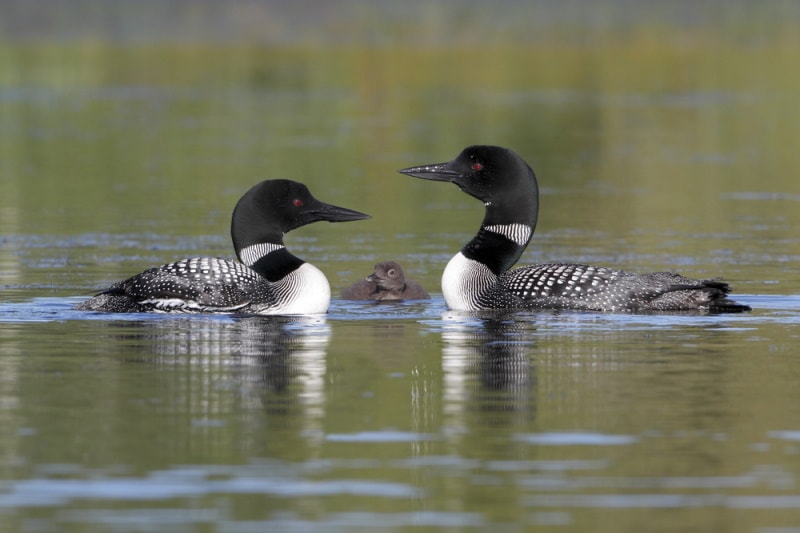
6. The Oldest Loon Was 29 Years and 10 Months Old
Loons differ from many other species because of their relatively long lifespan. Their average generation length is 9.8 years. However, the oldest confirmed individual comes from banding data collected by the US Geological Survey (USGS). Their records show a loon that was first caught in Michigan in 1989. It was located again on April 22, 2016, making it 29 years and 10 months old. It was released alive.
7. The Global Loon Population Is 640,000 Individuals
Population estimates offer an excellent way to monitor the conservation status of various species. Scientists estimate there are 640,000 Common Loons worldwide, with birds in the United States, Canada, Greenland, and the west coast of Europe. According to the International Union for Conservation of Nature and Natural Resources (IUCN), they are a species of least concern.

8. Lake Life and Loons Don’t Mix
If you go birdwatching to find loons, you’ll learn quickly that they are flighty. You’re least likely to spot them on lakes with a dense human presence or lots of activity. Research has confirmed that these birds avoid these places. They also experience less reproductive success if they live in these areas. That behavior isn’t unusual among birds. It’s a product of evolution and the results of human disturbance.
9. Smaller Loons’ Yodels Have Higher Frequencies
Male and female loons look alike, something that’s typical for monogamous species like loons. However, size varies between the sexes, with males nearly 30% larger than females. Vocalizations can provide another clue. Only male loons yodel. These calls can travel nearly 10 miles away! It makes sense since they are defending their territories, being the larger of the sexes.
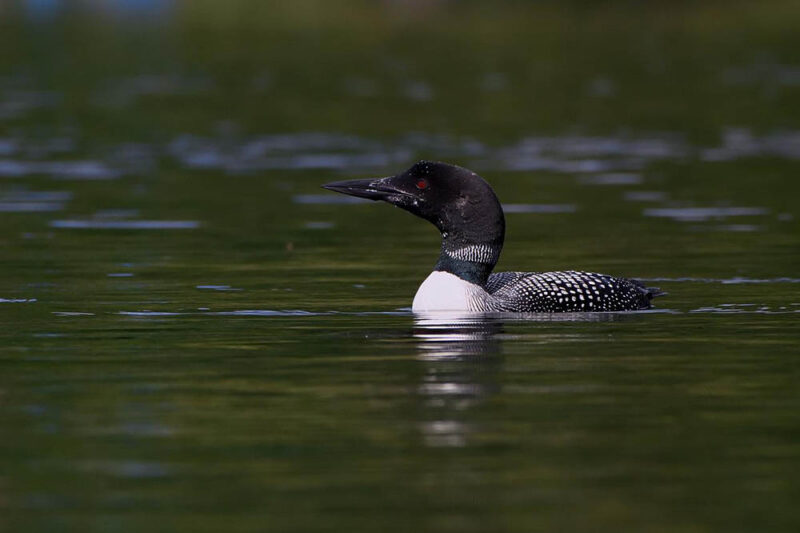
10. Loons Can Fly Incredible Distances
We know loons are large with the anatomy to support their weight. They also have the stamina, strength, and endurance to boot. According to the USGS, the longest recorded flight was 670 miles in one day. That can make short work of their 1,570-mile migration to their wintering grounds down south or to the west coast of the country.
11. The Common Loon Has Another Name
It’s not unusual for scientists to rename or reclassify species when they learn more about its evolution or history. Often, some animals have one or more synonyms. The Common Loon is a classic example with its other moniker, the Great Northern Diver. It’s fitting since this bird can swim down up to 200 feet when foraging.
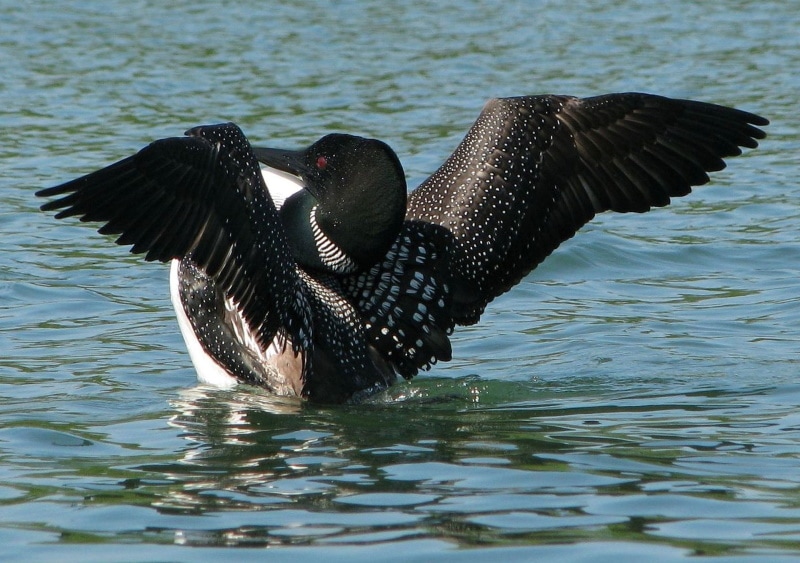
12. Scientists Consider the Common Loon an Indicator Species
We discussed the long lifespan of the Common Loon. It also has a low reproductive rate. The female lays only one clutch of eggs yearly. Not all of them survive, either. These traits make this species an excellent choice as an indicator species. This bird has certain habitat requirements. Their presence gauges the effects of human activity, water chemistry, and water quality.
13. The Loon’s Call Captivated Naturalist John Muir
The loon’s vocalizations are quintessential elements of the North Woods and wherever they live. Their haunting calls caught the attention of naturalist John Muir who described them as, “…one of the wildest and most striking of all the wilderness sounds.” We couldn’t agree more. While they can vocalize anytime, you’re more likely to hear them at night, which adds to their mysticism.
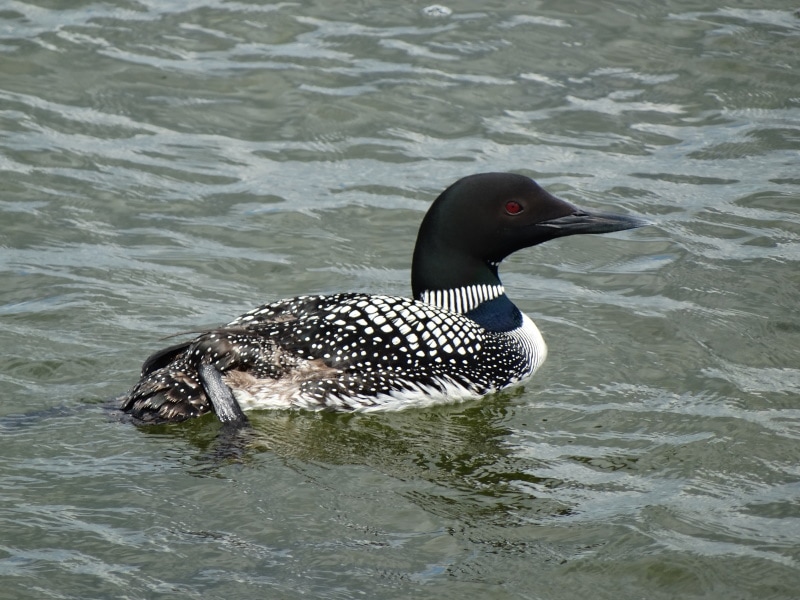
14. Canadians Honored the Loon With Its Replacement for the $1 Bill, the Loonie Coin
The Common Loon lives across the entire Canadian country. It provides many elements these birds prefer. Canadians took their love of this species one step further in 1987 with the issue of the $1 coin to replace the paper currency. A lone loon is on the back with the late Queen Elizabeth II on the front. The people affectionately refer to the coin as the loonie.
15. Minnesota made the Common Loon Its State Bird in 1961
Canada wasn’t the only place to honor the Common Loon. Minnesota got the jump on their northern neighbor in 1961 with the declaration of the species as their state bird. The Land of 10,000 Lakes has the largest American population of loons, making the designation fitting. It is home to roughly 12,000 birds. Fortunately, there’s plenty of habitat with 14,380 lakes and not just 10,000.
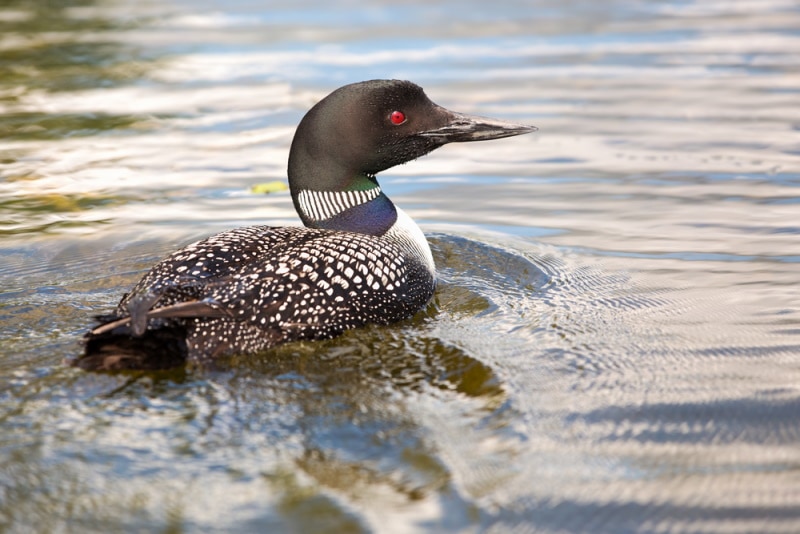
How to Spot Loons
Using a spotting scope is one of the best ways to view loons. They are weary of people for a good reason. It doesn’t matter if you’re on land or water. They will still dive underwater to get away from you. The scope gives them breathing room to keep them on the surface. They are most active at dusk and dawn. They typically swim in deep waters on large lakes with limited public access.

Final Thoughts
Loons are the epitome of master divers. Their body shape and fast speed make them excellent swimmers. We’d expect nothing less from a bird that eats fish and aquatic organisms exclusively. They are at home on the water, whether it’s a lake in the northern woods or a chilly shoreline off of Greenland. Their unique calls and interesting life history make them worth seeking out to add to your bird watching list.
Featured Image Credit: Steve Oehlenschlager, Shutterstock
Table of Contents
- Top 15 Loon Facts:
- 1. Loons Defend Territories Up to 200 Acres
- 2. Chicks Start Calling When They’re Only 1 Day Old
- 3. An Adult Loon’s Wingspan Is Nearly 5 feet Wide
- 4. Loons Aren’t Landlubbers
- 5. Pairs Wail When Separated
- 6. The Oldest Loon Was 29 Years and 10 Months Old
- 7. The Global Loon Population Is 640,000 Individuals
- 8. Lake Life and Loons Don’t Mix
- 9. Smaller Loons’ Yodels Have Higher Frequencies
- 10. Loons Can Fly Incredible Distances
- 11. The Common Loon Has Another Name
- 12. Scientists Consider the Common Loon an Indicator Species
- 13. The Loon’s Call Captivated Naturalist John Muir
- 14. Canadians Honored the Loon With Its Replacement for the $1 Bill, the Loonie Coin
- 15. Minnesota made the Common Loon Its State Bird in 1961
- How to Spot Loons
- Final Thoughts
About the Author Chris Dinesen Rogers
Chris has been writing since 2009 on a variety of topics. Her motto with all of her writing is “science-based writing nurtured by education and critical thinking.” Chris specializes in science topics and has a special love for health and environmental topics, and animals of all shapes and sizes.
Related Articles:
Binocular Magnification Chart: Numbers & Distances Compared
When Were Binoculars Invented? History, Today & Future
10 Types of Hummingbirds in Arkansas (With Pictures)
8 Types of Hummingbirds in Nebraska (With Pictures)
5 Types of Hummingbirds in Idaho (With Pictures)
3 Types of Hummingbirds in Mississippi (With Pictures)
8 Types of Hummingbirds in Kansas (With Pictures)
5 Types of Hummingbirds in West Virginia (With Pictures)
